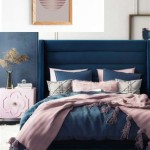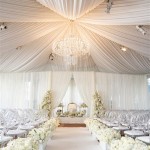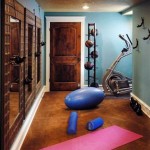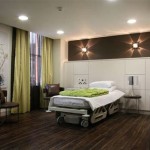One Room Cabin Decorating Ideas: Maximizing Space and Rustic Charm
Decorating a one-room cabin presents a unique set of challenges and opportunities. The goal is to create a space that is both functional and aesthetically pleasing, reflecting the rustic charm of cabin living while maximizing every square inch. Careful planning and creative implementation are crucial to transforming a single room into a comfortable and inviting haven.
The principles of small-space design are paramount in a one-room cabin. Multi-functional furniture, strategic storage solutions, and a cohesive color palette are essential tools. The aim is to create a sense of spaciousness and prevent the room from feeling cluttered or cramped. The selection of materials, textures, and decorative elements should complement the natural surroundings, fostering a connection with the outdoors.
Before embarking on any decorating project, it is beneficial to assess the existing features of the cabin. Consider the natural light available, the existing architectural details, and the overall style of the structure. This assessment will inform the design choices and help to create a harmonious and balanced space. Understanding the limitations and possibilities of the room is the first step toward successful decorating.
Prioritizing Multi-Functional Furniture
In a one-room cabin, furniture must work harder. Pieces that serve multiple purposes are invaluable for maximizing space and minimizing clutter. A sofa bed, for example, provides comfortable seating during the day and easily transforms into a sleeping area at night. Ottomans with built-in storage offer both seating and a place to stow away blankets, pillows, or other belongings. A dining table that folds down can be used for meals or as a work surface, and then folded away when not needed.
When selecting multi-functional furniture, it is important to consider the quality and durability of the pieces. Cabin living often involves exposure to the elements, so furniture should be able to withstand wear and tear. Look for pieces made from solid wood or other sturdy materials that will last for years to come. Also, consider the comfort and ergonomics of the furniture. A sofa bed should be comfortable to sit on as well as sleep on, and a dining table should be at a comfortable height for both eating and working.
Another strategy is to incorporate modular furniture. These pieces can be easily rearranged to suit different needs and activities. A modular shelving unit, for example, can be configured to create a room divider, a storage area, or a display case. Modular seating can be arranged in different configurations to accommodate different numbers of people. The flexibility of modular furniture makes it a valuable asset in a one-room cabin.
Think about furniture that can be easily moved or stored when not in use. Folding chairs can be stored away in a closet when not needed, freeing up floor space. Nesting tables can be stacked together when not in use, taking up minimal space. Lightweight furniture is easier to move around and rearrange as needed. The goal is to create a space that is flexible and adaptable to different activities.
Integrated storage is another key feature to look for in multi-functional furniture. Beds with drawers underneath, coffee tables with hidden compartments, and benches with built-in storage all provide valuable space for storing belongings. These types of furniture help to keep the room tidy and organized, preventing clutter from overwhelming the space.
Optimizing Vertical Space for Storage and Display
In a small cabin, utilizing vertical space is crucial for maximizing storage and creating visual interest. Walls are not just for hanging pictures; they can be used for shelving, cabinets, and other storage solutions. By taking advantage of vertical space, it is possible to free up valuable floor space and create a more open and airy feel.
Shelving is one of the most versatile and effective ways to utilize vertical space. Shelves can be used to store books, dishes, decorative items, and other belongings. Floating shelves are a great option for a minimalist look, while open shelving can be used to display collections or create a focal point. Shelves can be arranged in a variety of configurations to suit different needs and spaces. Consider shelves that reach all the way to the ceiling to maximize storage capacity.
Wall-mounted cabinets are another excellent option for maximizing vertical space. Cabinets can be used to store food, clothing, toiletries, and other items. Closed cabinets help to keep clutter out of sight, while open cabinets can be used to display decorative items. Wall-mounted cabinets can be installed in the kitchen, bathroom, or living area, depending on the storage needs.
Hanging organizers are a simple and affordable way to utilize vertical space. Hanging organizers can be used to store shoes, hats, scarves, and other accessories. They can be hung on the back of doors, in closets, or on walls. Hanging organizers are a great way to keep small items organized and easily accessible.
Consider using hooks and pegs to hang items on the walls. Hooks can be used to hang coats, hats, bags, and other items. Pegs can be used to hang tools, utensils, and other small items. Hooks and pegs are a simple and effective way to keep items off the floor and within easy reach.
When using vertical space, it is important to maintain a sense of balance and visual harmony. Avoid overcrowding the walls with too many shelves or cabinets. Leave some empty space to create a sense of openness and prevent the room from feeling cluttered. Use a consistent color palette and style for the shelves and cabinets to create a cohesive look.
Embracing Rustic Aesthetics and Natural Elements
The charm of a cabin lies in its rustic aesthetic and connection to nature. When decorating a one-room cabin, it is important to embrace these elements to create a warm and inviting atmosphere. Using natural materials, incorporating earthy colors, and adding rustic accents can help to evoke the feeling of a cozy retreat in the woods.
Wood is a quintessential element of cabin decor. Incorporate wood into the design through furniture, flooring, walls, and decorative accents. Reclaimed wood adds character and history to the space, while natural wood tones create a warm and inviting atmosphere. Consider using wood paneling on the walls or ceiling to create a rustic feel. Wood furniture, such as a log bed or a rustic coffee table, can add to the cabin's charm.
Stone is another natural material that can be used to enhance the rustic aesthetic of a cabin. A stone fireplace is a classic feature that provides warmth and visual appeal. Stone accents can also be used on walls, floors, or countertops. The texture and color of stone add depth and character to the space.
Earthy colors are essential for creating a natural and inviting atmosphere in a cabin. Browns, greens, beiges, and grays are all excellent choices. These colors evoke the feeling of nature and create a sense of calm and tranquility. Use these colors on the walls, furniture, and accessories to create a cohesive and harmonious look.
Rustic accents can be used to add personality and charm to a cabin. Woven baskets, antique lanterns, vintage maps, and handcrafted pottery are all examples of rustic accents. These items add a touch of history and character to the space. Consider displaying collections of natural objects, such as pine cones, stones, or shells.
Bring the outdoors in by incorporating plants into the cabin decor. Plants add life and color to the space and help to purify the air. Choose plants that are easy to care for and that thrive in indoor conditions. Consider hanging plants from the ceiling or placing them on shelves or windowsills.
Textiles can play a significant role in creating a cozy and comfortable cabin environment. Use natural fabrics such as cotton, linen, and wool. Consider using textured fabrics such as corduroy, velvet, or faux fur. Layering textiles can add warmth and depth to the space. Use throw blankets, pillows, and rugs to create a cozy and inviting atmosphere.
Lighting is an important element of cabin decor. Use warm and natural lighting to create a relaxing atmosphere. Avoid harsh fluorescent lighting. Consider using dimmer switches to adjust the lighting to suit different activities. Candles and lanterns can add a touch of romance and charm to the space.
By embracing rustic aesthetics and natural elements, it is possible to transform a one-room cabin into a cozy and inviting retreat. The key is to create a space that reflects the natural surroundings and that feels comfortable and relaxing.

Home Page One Room Cabin Style Cozy Decor

Mimi London Turns A One Room Hideaway On Lake Michigan Into Rustic Refuge Small Cabin Interiors Interior Design

Cottage Decorating Ideas

24 Cabin Style Bedrooms Inspired By A Rustic Getaway

Best One Room Cabin Individual With 1 Queen Bed Facing A Wood Burning Fireplace Sitting Ar Cabins Interiors

Small Cabin Decorating Ideas And Inspiration Decoist

19 Log Cabin Home Decorating Ideas For Your In 2025

19 Log Cabin Home Decorating Ideas For Your In 2025

Small Cabin Decorating Ideas And Inspiration Decoist

15 Cozy Cabin Decor Ideas For A Warm Winter Nikki S Plate
Related Posts







